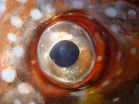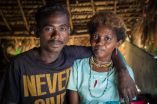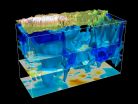(Press-News.org) Great Neck, NY - While the consequences of osteoporosis are worse in men than women - including death - older males are far less likely to take preventive measures against the potentially devastating bone-thinning disease or accept recommendations for screening, according to startling new research by North Shore-LIJ Health System geriatricians.
Geriatric fellow Irina Dashkova, MD, designed and led a cross-sectional survey of 146 older adults in New York and Florida that showed stunning gender differences in perspectives, beliefs and behaviors surrounding osteoporosis, which primarily affects women but also affects up to 2 million American men. Another 8 million to 13 million men in the United States have low bone mineral density, a condition known as osteopenia that's a precursor to osteoporosis.
"We were surprised at how big a difference we found between men and women regarding osteoporosis," said Dr. Dashkova, lead author of the study, which is scheduled for presentation at The American Geriatrics Society's 2015 Annual Scientific Meeting, which will take place in Washington, DC, from May 15-17.
"The fact that longevity is increasing in our population is wonderful. But we know from research that when men suffer fractures, their mortality is higher than in women and that severe medical consequences and loss of independence are much more prevalent in men," she added. "In our environment, you just get this perception that osteoporosis is a women's problem. This has to be changed, and the sooner the better."
More than 10 million Americans suffer from osteoporosis - raising their risk for serious bone fractures - and another 43 million have low bone mineral density, according to the National Osteoporosis Foundation. Prior research showed that 13% of white men in the United States over age 50 will experience at least one osteoporosis-related fracture during their lifetime.
Strikingly, the risk of death after sustaining a hip fracture is twice as high in men compared to women, and loss of independence is also more common in males. Some medical conditions and drugs that can affect osteoporosis risk are male-specific, such as prostate cancer drugs that affect the production of testosterone or the way it works in the body.
Dr. Dashkova's research, in which she collaborated with mentoring author Gisele Wolf-Klein, MD, director of geriatric education for the North Shore-LIJ Health System, examined the psychological and social factors surrounding osteoporosis influencing each gender.
Among the 146 survey respondents, roughly one-third were men with an average age of 72. More than 70% were white. Women were far more likely to have never smoked compared to men (78.8% compared to 21.3%) and markedly more likely to report a family history of osteoporosis (nearly 91% compared to 9.1%).
Additionally, while most women would accept osteoporosis screening if offered, less than 25% of men would, the survey found. Women were also more than 4 times as likely as men to take preventive measures against osteoporosis, such as taking calcium and vitamin D supplements to strengthen bones.
Dr. Wolf-Klein, also program director for the geriatric fellowship at North Shore-LIJ, noted that osteoporosis testing involves a painless, quick procedure known as a DXA scan that shouldn't be considered fearsome. But healthcare providers also aren't encouraging men to undergo screening as often as they should, she said.
"Our survey clearly establishes that physicians are just not thinking of screening men. It's only when older men fall and break their hip that someone thinks maybe we should do something to prevent them breaking the other hip," Dr. Wolf-Klein said. "Not only is society in general unaware of the problem of osteoporosis in men, men are not seeking screening and diagnosis."
Drs. Dashkova and Wolf-Klein hope their new study prods greater awareness among the public as well as clinicians, including specialists in areas such as cardiology, nephrology and endocrinology who are caring for more older adults as the population ages.
"We geriatricians are delighted to see that longevity is increasing in both males and females," Dr. Wolf-Klein said. "The average age in my practice is in the 90s, and our patients are to be congratulated because clearly they're doing something right. But we have a duty to make sure those later years are as happy and productive as can be and not spent in a wheelchair."
INFORMATION:
For media interviews during the AGS meeting, please contact Gisele Wolf-Klein, MD at 516-526-1722, gwklein11@aol.com, or Irina Dashova, MD at 516-317-9613, idashkova@nshs.edu
Great Neck, NY - With an aging Baby Boomer population and increasing numbers of childless and unmarried seniors, nearly one-quarter of Americans over age 65 are currently or at risk to become "elder orphans," a vulnerable group requiring greater awareness and advocacy efforts, according to new research by a North Shore-LIJ geriatrician and palliative care physician.
A case study and literature review by Maria Torroella Carney, MD, chief of geriatric and palliative medicine at the North Shore-LIJ Health System, zeroes in on staggering data on the prevalence and risks ...
Researchers at the University of Birmingham have shed new light on the relationship between autistic tendencies and psychosis proneness in neurotypical adults.
If a similar pattern were found in people diagnosed with these conditions, their findings would suggest that a co-occurrence of both conditions might balance, and diminish problems associated with perspective-taking difficulties.
The study, published in the journal Proceedings of the Royal Society B, indicates that while increased tendencies for either condition are associated with perspective-taking difficulties, ...
This news release is available in Japanese.
Though some large predatory fish, like tuna, have been shown to temporarily warm muscles or organs during pursuit, at least one fish may have done that one better by being able to internally generate heat that warms its heart and brain, a new study reports. This ability increases the fish's metabolic function in cold deep waters, and it shows that birds and mammals are not the only vertebrates with warm hearts. One thing that sets mammals and birds apart from vertebrates like fish is the ability to internally warm ...
This news release is available in Japanese.
Allowing both males and females in hunter-gatherer groups to choose their living companions reduces the number of family members in individual hunter-gatherer camps, a new study shows. The results answer a longstanding mystery about why hunter-gatherer populations have evolved to comprise large numbers of unrelated individuals, especially since hunter-gatherers have shown a strong preference to live with kin. Previously, studies have pointed to pair-bonding, or lifelong monogamous relationships in which couples go ...
This news release is available in Japanese. There's more than one explanation for how colony-living animals like bees evolve their unique social structure, according to a detailed genome analysis conducted by Karen Kapheim and colleagues. Bees are eusocial, meaning that some of their workers forego reproduction to care for their siblings. In some cases, this can lead to an elaborate and sophisticated "superorganism" of thousands of individuals. Kapheim and colleagues took a detailed look at the genomes of ten bee species to determine if the evolution of eusociality always ...
New in the Hastings Center Report
Patient-satisfaction surveys: improving health care, or leading it astray? The downside of courage, right-to-try laws, and more in the May-June 2015 issue.
Patient-Satisfaction Surveys on a Scale of 0 to 10: Improving Health Care, or Leading It Astray?
Alexandra Junewicz and Stuart J. Youngner
It is increasingly common for patient-satisfaction surveys to be used as indicators of health care quality, as well as to influence the reimbursement paid to providers. But the authors argue that the surveys could eventually compromise the ...
Many television advertisers voice fears that distracted viewers -- those increasingly frenetic multitaskers using smartphones, laptops and tablets while viewing TV - are becoming less receptive to advertisers' messages. A new study published in the online Articles in Advance section of Marketing Science, a journal of the Institute for Operations Research and the Management Sciences (INFORMS), refutes this conventional wisdom and concludes that the "second screen" puts a virtual store in every consumer's pocket. Multitasking viewers now visit, browse, and even buy advertised ...
An anti-poverty program tested extensively on three continents has produced sustained gains in individuals' income, wealth, and well-being, according to a study published today in the journal Science.
The program provides very poor people with productive assets, such as livestock, as well as job training, life-skills coaching, and health information. Known as the "Graduation" program, its intention was to examine whether helping the poor in multiple ways simultaneously could be especially effective in fighting poverty.
Overall, with more than 20,000 people enrolled ...
A new paper, co-authored by Woods Hole Research Center Senior Scientist Richard A. Houghton, entitled, "Audit of the global carbon budget: estimate errors and their impact on uptake uncertainty", was published in the journal Biogeosciences. The paper confirms that as carbon emissions continue to climb, so too has the Earth's capacity to absorb carbon dioxide from the atmosphere. About half of the emissions of CO2 each year remain in the atmosphere; the other half is taken up by the ecosystems on land and the oceans.
For Dr. Houghton, "There is no question that land ...
A new work based on 3-D supercomputer simulations of earthquake data has found hidden rock structures deep under East Asia. Researchers from China, Canada, and the U.S. worked together to publish their results in March 2015 in the American Geophysical Union Journal of Geophysical Research, Solid Earth.
The scientists used seismic data from 227 East Asia earthquakes during 2007-2011, which they used to image depths to about 900 kilometers, or about 560 miles below ground.
Notable structures include a high velocity colossus beneath the Tibetan plateau, and a deep mantle ...


